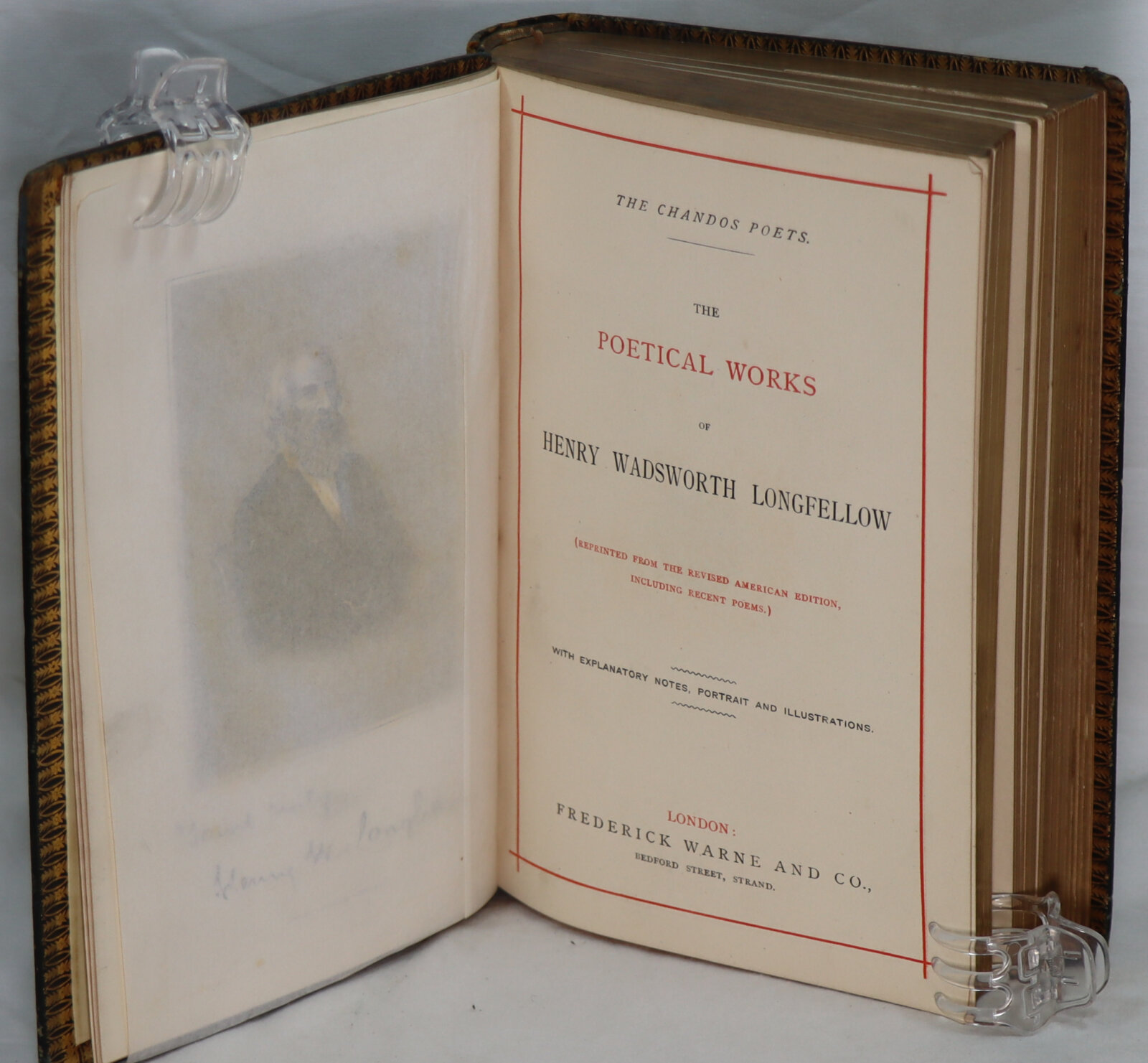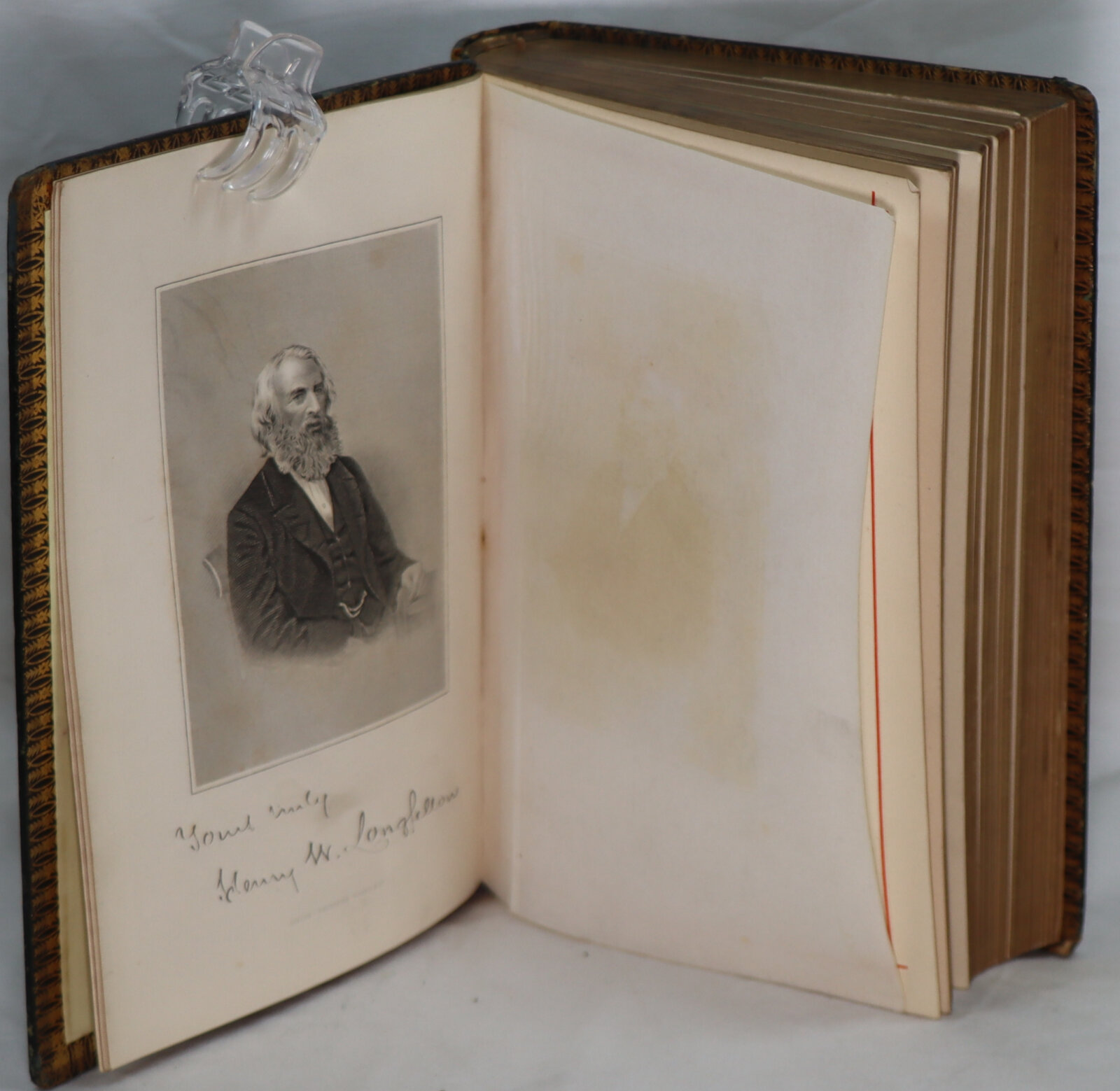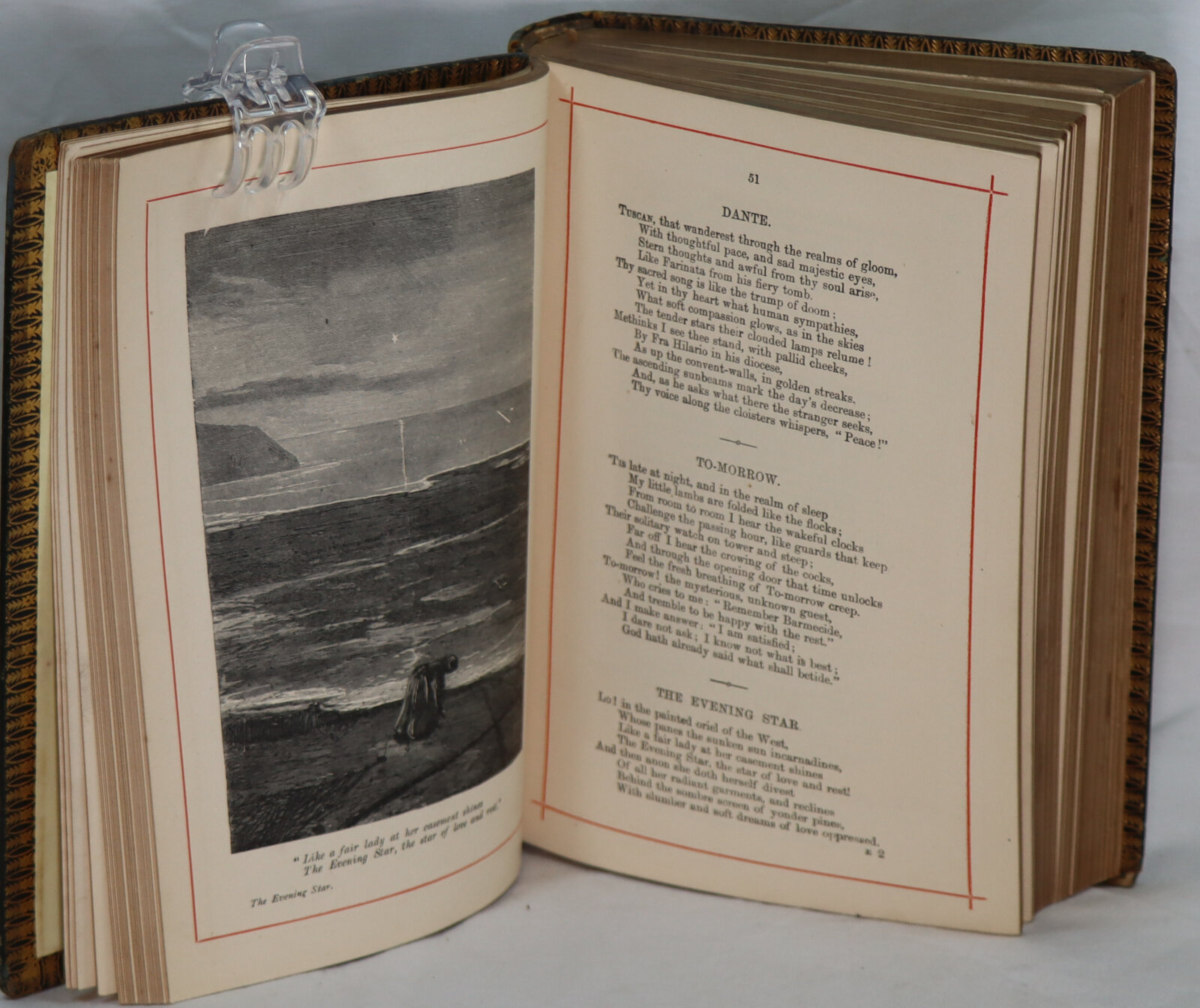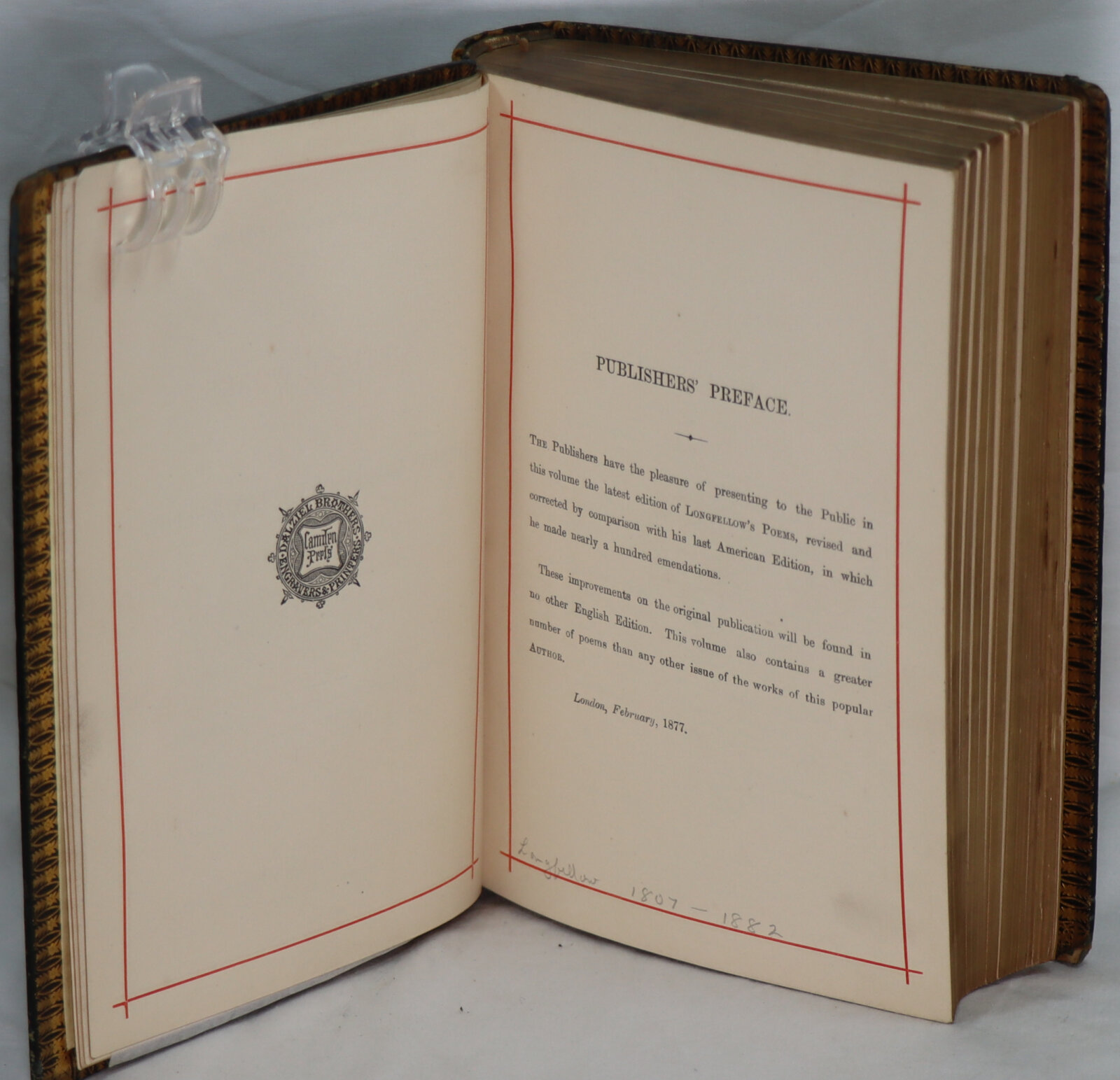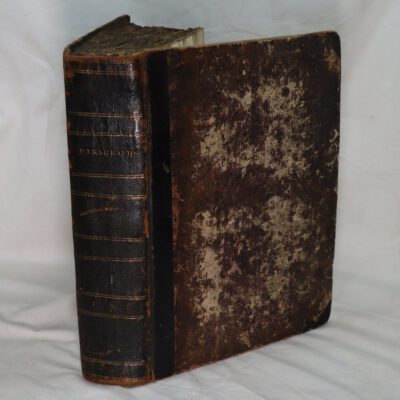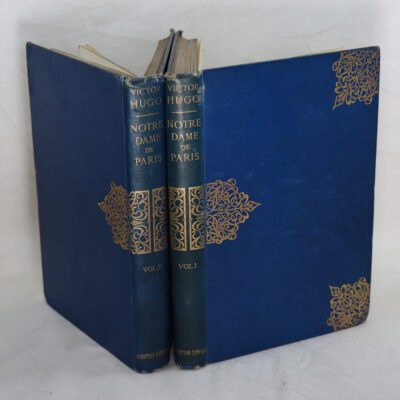The Poetical Works of Henry Wadsworth Longfellow.
By Henry Wadsworth Longfellow
Printed: 1877
Publisher: Frederick Warne & Co. London
| Dimensions | 15 × 20 × 4 cm |
|---|---|
| Language |
Language: English
Size (cminches): 15 x 20 x 4
Condition: Fine (See explanation of ratings)
Item information
Description
Green morroco grained leather with gilt decoration and title on the spine and front board. All edges gilt.
-
F.B.A. provides an in-depth photographic presentation of this item to stimulate your feeling and touch. More traditional book descriptions are immediately available.
A lovely backed edition fit to embellish any library
Longfellow was the most popular poet of his day. As a friend once wrote, “no other poet was so fully recognized in his lifetime”. Many of his works helped shape the American character and its legacy, particularly with the poem “Paul Revere’s Ride”. He was such an admired figure in the United States during his life that his 70th birthday in 1877 took on the air of a national holiday, with parades, speeches, and the reading of his poetry.
Over the years, Longfellow’s personality has become part of his reputation. He has been presented as a gentle, placid, poetic soul, an image perpetuated by his brother Samuel Longfellow who wrote an early biography which specifically emphasized these points. As James Russell Lowell said, Longfellow had an “absolute sweetness, simplicity, and modesty”. At Longfellow’s funeral, his friend Ralph Waldo Emerson called him “a sweet and beautiful soul”.In reality, his life was much more difficult than was assumed. He suffered from neuralgia, which caused him constant pain, and he had poor eyesight. He wrote to friend Charles Sumner: “I do not believe anyone can be perfectly well, who has a brain and a heart”. He had difficulty coping with the death of his second wife. Longfellow was very quiet, reserved, and private; in later years, he was known for being unsocial and avoided leaving home.
Longfellow had become one of the first American celebrities and was popular in Europe. It was reported that 10,000 copies of The Courtship of Miles Standish sold in London in a single day. Children adored him; “The Village Blacksmith”‘s “spreading chestnut-tree” was cut down and the children of Cambridge had it converted into an armchair which they presented to him. In 1884, Longfellow became the first non-British writer for whom a commemorative bust was placed in Poet’s Corner of Westminster Abbey in London; he remains the only American poet represented with a bust. In 1909, a statue of Longfellow was unveiled in Washington, DC, sculpted by William Couper. He was honored in March 2007 when the United States Postal Service issued a stamp commemorating him.
Longfellow’s popularity rapidly declined, beginning shortly after his death and into the 20th century, as academics focused attention on other poets such as Walt Whitman, Edwin Arlington Robinson, and Robert Frost. In the 20th century, literary scholar Kermit Vanderbilt noted: “Increasingly rare is the scholar who braves ridicule to justify the art of Longfellow’s popular rhyming.” Twentieth-century poet Lewis Putnam Turco concluded that “Longfellow was minor and derivative in every way throughout his career … nothing more than a hack imitator of the English Romantics.”
Henry Wadsworth Longfellow (February 27, 1807 – March 24, 1882) was an American poet and educator whose works include “Paul Revere’s Ride”, The Song of Hiawatha, and Evangeline. He was the first American to translate Dante Alighieri’s Divine Comedy and was one of the fireside poets from New England.
Longfellow was born in Portland, Maine, which was then still part of Massachusetts. He studied at Bowdoin College and became a professor at Bowdoin and later at Harvard College after spending time in Europe. His first major poetry collections were Voices of the Night (1839) and Ballads and Other Poems (1841). He retired from teaching in 1854 to focus on his writing, and he lived the remainder of his life in the Revolutionary War headquarters of George Washington in Cambridge, Massachusetts. His first wife Mary Potter died in 1835 after a miscarriage. His second wife Frances Appleton died in 1861 after sustaining burns when her dress caught fire. After her death, Longfellow had difficulty writing poetry for a time and focused on translating works from foreign languages. Longfellow died in 1882.
Longfellow wrote many lyric poems known for their musicality and often presenting stories of mythology and legend. He became the most popular American poet of his day and had success overseas. He has been criticized by some, however, for imitating European styles and writing specifically for the masses.
Poets’ Corner is the name traditionally given to a section of the South Transept of Westminster Abbey because of the high number of poets, playwrights, and writers buried and commemorated there. The first poet interred in Poets’ Corner was Geoffrey Chaucer. Over the centuries, a tradition has grown up of interring or memorialising people there in recognition of their contribution to British culture. In the overwhelming majority of cases, the honour is awarded to writers.
In 2009, the founders of the Royal Ballet were commemorated in a memorial floor stone and on 25 September 2010, the writer Elizabeth Gaskell was celebrated with the dedication of a panel in the memorial window. On 6 December 2011, former Poet Laureate Ted Hughes was commemorated with a floor stone. On 22 November 2013, the fiftieth anniversary of his death, writer C. S. Lewis was commemorated with a memorial floor stone. The poet Philip Larkin was commemorated with a floor stone dedicated on 2 December 2016.
Want to know more about this item?
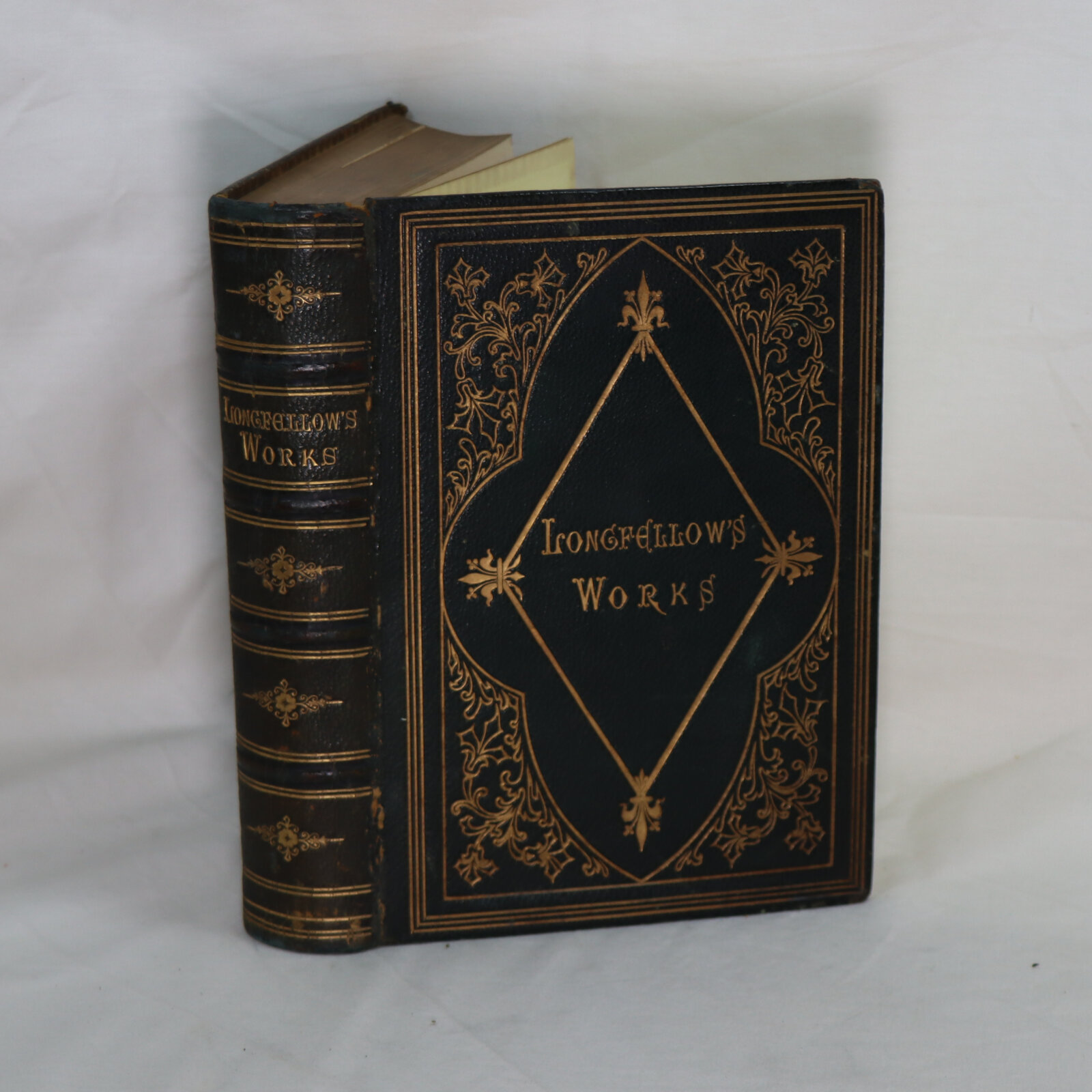
Related products
Share this Page with a friend

